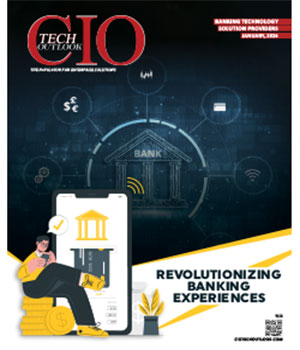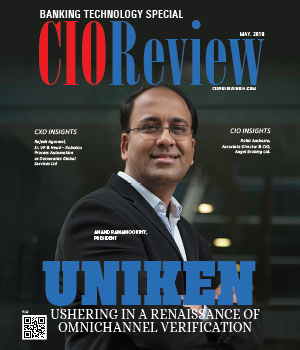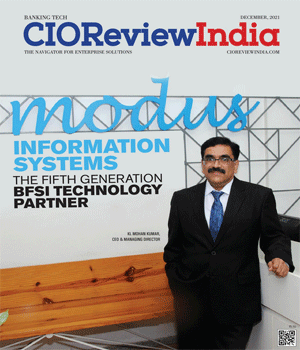
Internet of Me (IoM)
Jayesh Shah, EVP & Head - Technology Initiatives, DHFL- Financial Services Group | Thursday, 05 May 2016, 11:58 IST
DHFL (BSE: 511072), headquartered in Mumbai, is a housing finance company that provides home loan products, insurance services and fixed deposit schemes. The company provides housing finance to the lower and middle income groups in India.
 Ahink of this as a possible scenario. When you get back home from work and your car approaches your apartment, the door unlocks, the lights turn on and the air conditioner switches on. Another scenario; the fitness device you are wearing switches on the lighting and the coffee machine when you wake up. After fitness devices and smart watches, smart clothing is on its way. These ‘wearables’ are changing the way we consume the internet. Your biometric data is controlling the things around you. You get the picture? Welcome to the ‘Internet of Me (IoM)’.
Ahink of this as a possible scenario. When you get back home from work and your car approaches your apartment, the door unlocks, the lights turn on and the air conditioner switches on. Another scenario; the fitness device you are wearing switches on the lighting and the coffee machine when you wake up. After fitness devices and smart watches, smart clothing is on its way. These ‘wearables’ are changing the way we consume the internet. Your biometric data is controlling the things around you. You get the picture? Welcome to the ‘Internet of Me (IoM)’.
Whether strapped to your wrist or embedded in your clothes, applications are monitoring body systems through sensors and businesses are tapping into the fact that our world is becoming more personalised and are building new applications, products & services that create a new level of digital experiences in our lives. According to ABI Research, the wearables market can be segmented into seven sections – wearable cameras, smart clothing, smart glasses, health care, sport & activity trackers, 3D motion trackers and smartphone compatible watches.
The IoM is not just about wearables. It is about smart homes & offices with connected TVs, refrigerators & microwave ovens; it is about connected cars & other objects; this involves billions of objects equipped with sensors, producing continuous streams of data. However, wearable fitness devices are expected to be the most adopted according to a survey of 2000 North Americans conducted by Acquity Group.
The age of hyper personalization is dawning upon us and the internet for an individual is becoming as unique as his or her fingerprint. It is all about creating the ultimate customer experiences, very personalised and engaging. Targeted marketing based on individual journey maps is the logical next step, given the fact that each one of us leaves a huge digital footprint on the web as we surf the net for hours in a single day. A vast majority of consumers said that a personalised experience influenced their purchasing decisions. Think of the wow factor in getting an offer on the spot as you stood watching an item of interest in a shop window. Unknown to you, it could be a grid of beacons at work.
The relevance of data cannot be emphasized enough in the realm of the IoM and IoT. A continuous stream of heterogeneous data is going to hit data centres resulting in volumes that are mind boggling. However, this raw data has no value unless harnessed. With the right set of tools, powerful insights can be obtained from it. Complex algorithms are being developed to allow corporate to predict purchasing behaviours using data insights. Enter cognitive analytics and machine learning that would make the IoT smarter by learning from historical data using systems that reason and interact more naturally with humans.
So what are the challenges with IoM? Battery life is a challenge with wearables and continues to be so. Connectivity is also crucial and for that the Bluetooth Low Energy (BLE) protocol, also known as Bluetooth Smart, is typically used since it is low on power consumption and cost.
Another far greater challenge, since the ‘Internet of Me’ places great emphasis on the customer experience is the question - how is the data being used? The big issue being protecting consumer's privacy as more sensitive personal information is being sent and received by a growing number of devices. Not only are hackers interested in this data, but so is the government. The major worry for consumers in fully adopting IoT is privacy and security. The threats are in the form of Identification, tracking and profiling. Designers & developers should focus on protecting user data and consumers should have the option of opting out. There have to be legal frameworks to protect privacy. Companies that collect data should be only allowed to use it for enhancing their products and barred from sharing it or storing it forever.
As we move towards an environment where connected devices far outnumber human beings, IoT and IoM are here to stay. According to Next Market Insights, over 373 million smart watches will be shipped by the year 2020. According to Juniper Research, revenues from smart wearable devices which include Fitness, Glasses, Watches, Multimedia, Clothing, Jewellery, Healthcare and Enterprise, will reach $500+ billion in sales by 2019.
IoT and IoM are just acronyms for many, but so was ‘www’ not that long ago. How it changed the world is for everyone to see; these new acronyms will be as transformative, if not more.
CIO Viewpoint
Machine Learning In Cybersecurity: The Risks &...
By Neelesh Kripalani, Chief Technology Officer, Clover Infotech
5 Major Saas Trends To Check-Out In 2021
By Vikas Bhonsle, CEO, Crayon Software Experts India
Artificial Intelligence & The Disruptive Chatbot
By Vishal Sinha, President & CIO, Tranzlease Holdings
CXO Insights
Crafting the Digital Journey in Banking
By Janifha Evangeline
Incorporating Blockchain Capabilities into...




.jpg)
.jpg)





